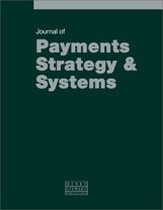Improving payment system efficiency in India: Next steps
Abstract
Efficiency in payment systems brings about many benefits for a country’s economy and its people. Many studies have indicated that a saving of 1 per cent of GDP is possible by improving payment system efficiency and moving physical payments to electronic payments. In India, this represents a huge opportunity. Many improvements have happened in India in terms of payment systems. Large value payments have comfortably moved to Real Time Gross Settlement. In the retail payment area, however, physical payments are still predominant — although all retail electronic payment options, such as NEFT, ECS, credit and debit cards, are growing. India needs to focus on reducing the volume of physical cheques and increasing electronic payments to achieve greater payment system efficiency. This paper is an attempt to study the payment use statistics of 2003–04 to 2008–09, analyse the trend and suggest a few approaches to improve the efficiency of Indian payment systems by reducing the use of cheques and increasing the use of electronic payment systems. Innovation, convenience, strong legal systems and incentives are the significant factors in improving efficiency. A few suggestions in those areas — including bringing in more than 155,000 branches of India Post and over 168,000 branches of cooperative credit institutions across India within the payment system framework, and accelerated adoption of mobile banking — are provided.
The full article is available to subscribers to the journal.
Author's Biography
Mahadevan Balakrishnan is currently with the Payment System Development Group, World Bank, helping multiple developing nations improve their financial market infrastructure. Prior to that he was Chief Operating Officer of the National Payments Corporation of India (NPCI), responsible for Business, Operations and Technology. In that role he was involved in the creation of multiple retail payment infrastructures for the country, covering NFS ATM Network, the Immediate Payment System (IMPS), ACH, cheque truncation systems, the automation of 1000+ clearing houses in India with a standard solution, AADHAAR-based payment ecosystems for direct benefit transfer schemes, and the RUPAY domestic cards scheme, thus helping NPCI deliver its vision of simple, easy, convenient and cost-effective retail payment systems for all Indians. The systems he helped create in India facilitated the PMJDY financial inclusion schemes and the Direct Benefits Transfer to Bank Accounts schemes, saving India billions of Rupees. He has over 25 years of banking/technology leadership/ management experience with leading banks such as ABN AMRO Bank, Barclays and Citibank, and he was also involved in the implementation of some of the payment systems for these banks. He is a postgraduate in Business Administration (MBA) and in Bank Management (MBM), and has a Doctorate (PhD) in Financial Management/Payments. He has published several papers relating to payment systems in national and international journals.
